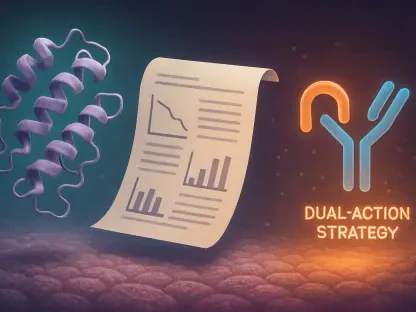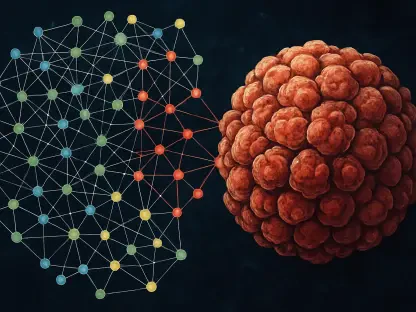African swine fever (ASF) is a highly contagious and deadly viral disease affecting both domesticated and wild pigs. With its widespread prevalence in areas such as Africa, Europe, Asia, and the Caribbean, this disease has significant economic implications. Recent estimates state that if ASF were to reach the United States, the economic losses could exceed $50 billion over a ten-year period. This alarming magnitude underscores the urgent need for effective vaccines to control and prevent the spread of ASF. A pivotal approach to addressing this challenge lies in the development of a reverse genetics system for the African swine fever virus (ASFV), as recently developed by researchers at the J. Craig Venter Institute (JCVI), the Friedrich-Loeffler-Institut (FLI), and the International Livestock Research Institute (ILRI).
1. Create Synthetic DNA
Scientists fabricate synthetic genetic material by replicating the virus’s DNA in a laboratory setting. Synthetic DNA is essentially a lab-made version of the virus’s genetic material, making it possible to study the virus in controlled conditions. Constructing synthetic DNA involves assembling base pairs in sequences that match the virus’s genome, which provides a framework for future genetic modifications. This advancement in synthetic genomics lays the foundation for developing genetically modified versions of the ASFV, presenting researchers with an invaluable tool for studying the virus’s biology and pathogenesis.
Furthermore, synthetic DNA allows for precise control over the genetic material being manipulated. Unlike naturally occurring viral DNA, which can have variations and mutations, synthetic DNA is consistent and can be replicated accurately. This consistency is critical for conducting experiments that require exact replication and for ensuring the reliability of results in subsequent studies.
2. Modify Virus Segments
Once synthetic DNA has been successfully constructed, scientists proceed by modifying segments of the African swine fever virus (ASFV). This process involves altering specific fragments of the virus to introduce desired genetic changes. These modified fragments are then combined into complete genomes using yeast recombination mechanisms, a method that leverages the natural ability of yeast cells to recombine DNA fragments.
The yeast recombination process is a crucial step because it allows the various modified segments to come together and form a complete viral genome. By utilizing yeast cells’ natural recombination mechanisms, researchers can efficiently and accurately assemble the genomes, ensuring that the genetic modifications are integrated correctly. This step lays the groundwork for producing genetically modified versions of the ASFV, which are essential for further research and vaccine development.
3. Transfer to E. coli
The altered genomes assembled in yeast are then transferred to E. coli bacteria for mass production and amplification. E. coli is a commonly used model organism in genetic engineering due to its rapid growth and well-understood genetics. The transfer of modified ASFV genomes to E. coli allows the bacteria to replicate the DNA in large amounts, making it feasible to isolate and purify the modified genomes in sufficient quantities for subsequent steps.
Mass production of the modified DNA in E. coli is critical for the scalability of the research. By harnessing the bacteria’s efficient replication machinery, researchers can produce large quantities of the genetically modified DNA necessary for extensive studies and potential vaccine development. This step ensures that there is enough of the altered DNA to proceed with introducing it into mammalian host cells for further experimentation.
4. Transfect Mammalian Cells
With the modified DNA sufficiently amplified, the next step involves transfecting the synthetic DNA into mammalian host cells. Transfection is the process of artificially introducing nucleic acids into cells, allowing the synthetic DNA to be taken up by the mammalian cells. This step is essential because it enables the host cells to begin expressing the introduced genetic material and sets the stage for the production of recombinant viruses.
Transfection into mammalian cells is a pivotal step in studying the virus’s behavior in a relevant biological context. By introducing the synthetic DNA into host cells that the virus naturally infects, researchers can observe how the virus replicates, interacts with the host cellular machinery, and triggers immune responses. These insights are crucial for understanding the virus’s pathogenesis and for developing effective vaccines that can elicit protective immune responses in the host animals.
5. Infect with Self-Helper Virus
After transfecting the mammalian cells with synthetic DNA, these cells are subsequently infected with a self-helper virus. The self-helper virus is an inhibited version of ASFV that has been modified using CRISPR/Cas9 technology, a powerful gene-editing tool that precisely cuts DNA at specific locations. The modifications introduced with CRISPR/Cas9 ensure that the self-helper virus cannot replicate on its own, providing an additional layer of safety in the experimental process.
Despite its lack of replication capability, the self-helper virus still provides the necessary proteins and machinery required for the synthetic DNA to replicate and assemble into new virus particles. This step is essential because it ensures that the synthetic DNA containing genetic modifications can replicate within the host cells. The proteins supplied by the self-helper virus allow the engineered virus to mimic natural viral replication and assembly processes, facilitating the production of live recombinant viruses.
6. Replicate and Assemble
The process of using the self-helper virus leads to the replication and assembly of new virus particles containing the synthetic DNA’s introduced genetic modifications. This replication occurs within the mammalian host cells, where the self-helper virus aids in assembling the genetic material into fully functional virus particles. The resulting virus particles carry the specific genetic changes introduced during the DNA synthesis and modification stages.
This step ensures that the genetic modifications are incorporated into the new virus particles, which can then be isolated and studied. By generating live recombinant viruses with precise genetic alterations, researchers can investigate how these changes affect the virus’s behavior, pathogenicity, and immune response in host cells. These recombinant viruses are valuable tools for understanding ASFV biology and for developing targeted interventions such as vaccines.
7. Generate Recombinant Viruses
The culmination of these intricate steps is the generation of live recombinant viruses that contain the specific genetic modifications introduced in the synthetic DNA. These recombinant viruses, which are produced using the assistance of the self-helper virus, are essentially genetically engineered variants of the ASFV. They serve as crucial tools for further research and vaccine development efforts.
With recombinant viruses in hand, researchers can embark on in-depth studies to determine how the introduced genetic modifications influence the virus’s characteristics and its interactions with the host organism. By examining these modified viruses, scientists can gain insights into how specific genes and genetic sequences contribute to the virus’s virulence, immune evasion, and replication efficiency. This knowledge is instrumental in guiding the development of effective vaccines that can elicit robust and protective immune responses.
8. Use for Further Research and Vaccine Development
These recombinant viruses offer researchers vital tools for advancing research and developing vaccines. Investigating the behavior of genetically modified viruses in laboratory settings allows scientists to better understand ASFV’s biology and pathogenesis. This insight can guide the creation of vaccines targeting viral components essential for infection and disease progression.
The reverse genetics system developed for ASFV has broader applications for other viruses, including double-stranded DNA viruses like the lumpy skin disease virus affecting cattle and emerging RNA viruses like Zika and Ebola. This adaptability highlights the potential of synthetic genomics-based reverse genetics systems to transform viral research and accelerate vaccine and treatment development for various viral diseases.
In summary, advancing reverse genetics systems for ASFV shows great promise for developing effective vaccines against this disease. The detailed process of creating synthetic DNA, modifying virus segments, transferring genomes to E. coli, transfecting mammalian cells, and using self-helper viruses exemplifies the innovation required to combat ASFV. This method not only aids ASFV research but also sets the stage for breakthroughs against other viral threats, marking a significant advancement in virology and vaccine development.









